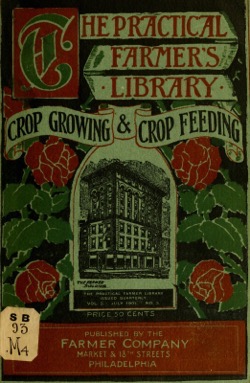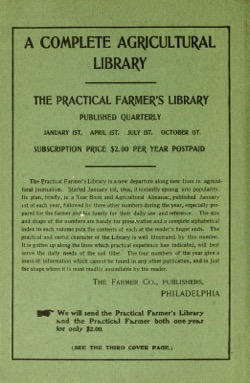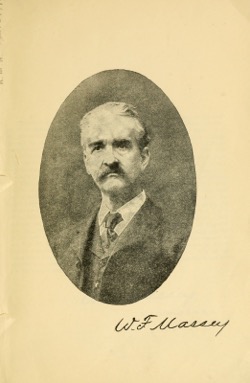Archive.org has a host of old gardening books (from mid-19th to mid-20th Century) available in many formats and on a host of topics. I happened across a few in my Pinterest feed and gone completely down the rabbit hole in this treasure trove of information. Sure some ideas might be out of
Download in Text, PDF, Single Page JPG, TORRENT from Archive.org
THE PRACTICAL FARMER’S LIBRARY
PUBLISHED QUARTERLY JANUARY 1ST, APRIL 1ST. JULY lST, OCTOBER 1ST.
SUBSCRIPTION PRICE $2.00 PER YEAR POSTPAID
The Practical Farmer’s Library is a new departure along new lines in agricul- tural journalism. Started January ist, 1899, it instantly sprang into popularity. Its plan, briefly, is a Year Book and Agricultural Almanac, published January ist of each year, followed by three other numbers during the year, especially pre- pared for the farmer and his family for their daily use and reference. The size and shape of the numbers are handy for preservation and a complete alphabetical index in each volume puts the contents of each at the reader’s finger ends. The practical and useful character of the Library is well illustrated by this number. It is gotten up along the lines which practical experience has indicated, will best serve the daily needs of the soil tiller. The four numbers of the year give a mass of information which cannot be found in any other publication, and in just the shape where it is most readily assimilable by the reader.
The Farmer Co., publishers,
PHILADELPHIA
PREFACE.
This book is the result of an effort to put into the plain language of the farm the facts which scientists have worked out in the laboratory, and which practical experience has proved to be applicable to the every day work of the farm. It is written for men who know nothing of chemistry, but who are anxious to learn something of the chemical combinations that are of value in the feeding of crops, and the best way to use them in the permanent improvement of their soil. For men who know nothing of the mysteries of plant life, but who are anxious to learn how plants live, grow and perform all their work in soil and air, so that they may be better able to comprehend their needs, and supply them in a rational manner.
While endeavoring to make the book scientifically accurate in all its statements I have tried to avoid all pedantry, but to make the whole so plain that the “way- faring man, though a fool, need not err.” I have undertaken the work with a good deal of misgiving as to what should be its exact position on some of the problems in nature as yet not fully solved, and about which there is much yet to be learned by the wisest minds. When such problems are attempted, I will candidly say that I do not as yet fully comprehend the processes involved, I will give the results so far as they are known. The acquirement of nitrogen by leguminous plants is one of the problems that has not yet been fully worked out, and while we know that they do get the nitrogen through the agency of minute organisms that live with them on their roots, the exact process by which these microscopic forms get the nitrogen is not yet fully understood. But for our purpose it is enough to know that they do get it and store it in the roots and soil for the future crop.
N. C. College of A. &. M. A.,
Raleigh, N. C.
More information on this book:
* A portion of each sale from Amazon.com directly supports our blogs
** Many of these books may be available from your local library. Check it out!
† Available from the LA Public Library






